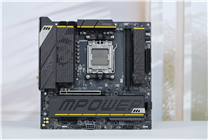As technology rapidly evolves, certain electronic products are increasingly at risk of becoming obsolete. This phenomenon is driven by advancements in technology, changing consumer preferences, and the competitive dynamics of the market. Here, we explore some electronic products that might soon fade into obsolescence, the reasons behind their potential decline, and the possibility of their resurgence in new forms.
What products are on the verge of obsolescence?
Televisions
Televisions have long been the cornerstone of home entertainment systems, but their relevance is being challenged by the rise of mobile devices like smartphones and tablets, as well as streaming services that offer on-demand content. Modern consumers often seek more personalized and flexible viewing experiences, which traditional TV models, especially smart TVs with their often complex systems and pricing models, struggle to provide. However, televisions continue to play a significant role in social settings, such as family gatherings and group entertainment scenarios. Future television technology may pivot towards more immersive experiences, such as holographic displays and advanced 3D visuals that do not require special glasses, potentially revitalizing their appeal
Cameras
The ubiquitous smartphone camera has significantly encroached on the territory once dominated by traditional cameras. With high-resolution capabilities, integrated beautification tools, and instant connectivity to social media, smartphones meet most casual photography needs that were previously the domain of compact cameras and even DSLRs. However, professional and hobbyist photographers still rely on specialized camera equipment for superior image quality and functionality, suggesting that while consumer cameras may fade, professional equipment could persist.
Wired Headphones
Wired headphones are facing stiff competition from wireless models, which offer users freedom from physical tethers and are increasingly incorporating high-quality sound technology and noise cancellation. Despite this, wired headphones maintain a niche in professional environments like music production and gaming, where audio delay and battery life are critical factors. Thus, while consumer use may decline, professional and enthusiast markets may continue to support the existence of wired headphones.
Tablets and E-Readers
Tablets and e-readers, once prized for their convenience and functionality, find themselves squeezed between the ever-growing capabilities of smartphones and the enduring utility of laptops. Their decline in popularity reflects overlapping functionalities with other devices, though specific applications in sectors like education, design, and certain professional services could keep them relevant. Innovations in display technology and battery life could also enable a resurgence or transformation of these devices into new forms tailored for niche markets
Projectors
Traditional projectors are losing ground to smart TVs and portable display technology that can offer similar or superior display capabilities without the setup complexity and space requirements of projectors. However, specialized applications such as home theaters, educational institutions, and professional settings might still provide a stable market for advanced projector technologies
Why do companies phase out products?
Companies decide to phase out electronic products based on a combination of factors that impact their profitability, market relevance, and operational feasibility (Allgreen). These decisions are critical for maintaining a competitive edge in the fast-paced electronics industry. Here’s an overview of the primary considerations involved in the discontinuation of electronic products:
Declining Sales and Profitability
A significant drop in sales and profitability often signals that a product is no longer viable in the market. Companies need to eliminate products that fail to generate sufficient revenue, as maintaining them can drain resources that could be better allocated elsewhere.
High Support and Manufacturing Costs
The costs associated with supporting aging products, including manufacturing, service, and component procurement, can become unsustainable. When the expense of keeping a product on the market outweighs its revenue, discontinuation becomes a logical step.
Availability of Newer Alternatives
The introduction of newer, more advanced products can render existing ones obsolete. Companies frequently phase out older models in favor of those with better features, performance, and efficiency to stay competitive
Changing Customer Needs and Market Trends
Products that fail to adapt to evolving consumer preferences and market trends risk becoming irrelevant. Companies must continuously innovate and update their product lines to meet current and future demand
Obsolescence of Components or Technologies
The discontinuation of key components or the obsolescence of technologies used in a product can make its production challenging and costly, prompting companies to phase it out.
Compliance and Regulatory Issues
Changing regulations, safety standards, and environmental concerns can necessitate the discontinuation of certain products. Compliance issues can make it impractical to continue offering a product.
Product Lifecycle Considerations
Products naturally progress through lifecycle stages—introduction, growth, maturity, and decline. When a product reaches the maturity or decline stage, it may signal the appropriate time for discontinuation.
Decision-Making Process
The process of deciding to discontinue a product involves:
- Continuous Monitoring: Analyzing sales figures, market share, and customer feedback to identify underperforming products.
- Market Analysis: Assessing market trends, emerging technologies, and the competitive landscape.
- Operational Feasibility: Evaluating manufacturing capabilities and resource availability.
- Strategic Alignment: Ensuring the product’s continuation aligns with the company’s overall business strategy and brand positioning.
- Communication: Proactively informing stakeholders about discontinuation plans to manage expectations and transitions.
Phase-Out Strategy
A well-planned phase-out strategy is crucial to minimize disruptions. This includes providing advance notice to customers, offering continued support for a transition period, and introducing replacement products or upgrades. In summary, the decision to discontinue an electronic product is multifaceted, involving careful consideration of financial performance, market dynamics, operational constraints, and strategic alignment. Companies must navigate these decisions thoughtfully to optimize their product portfolio and ensure long-term success in the electronics market.










